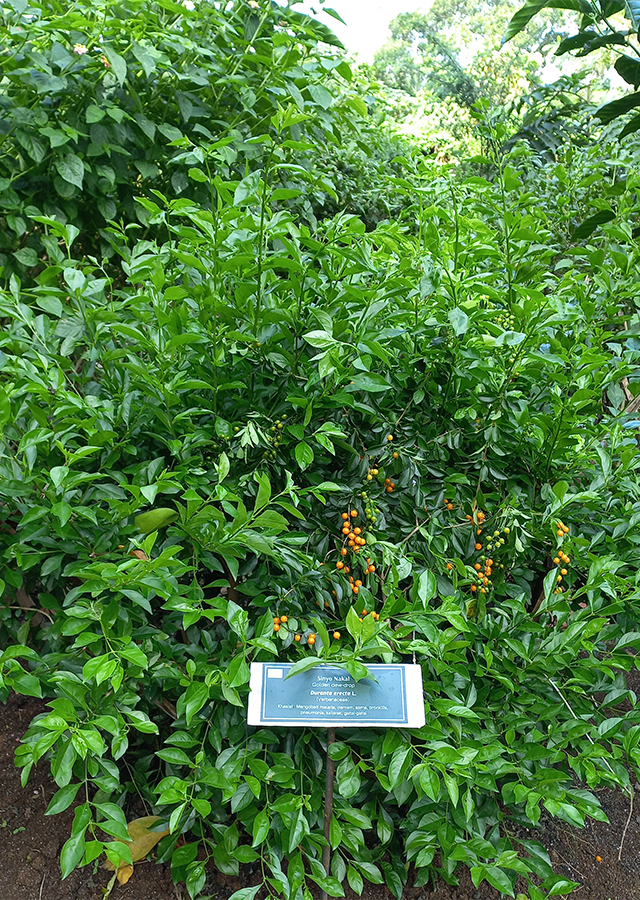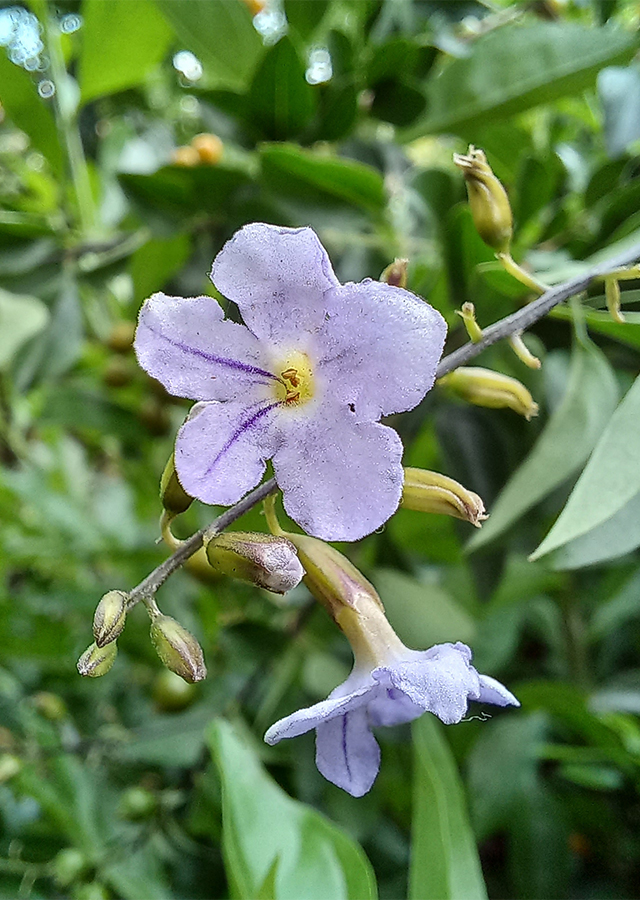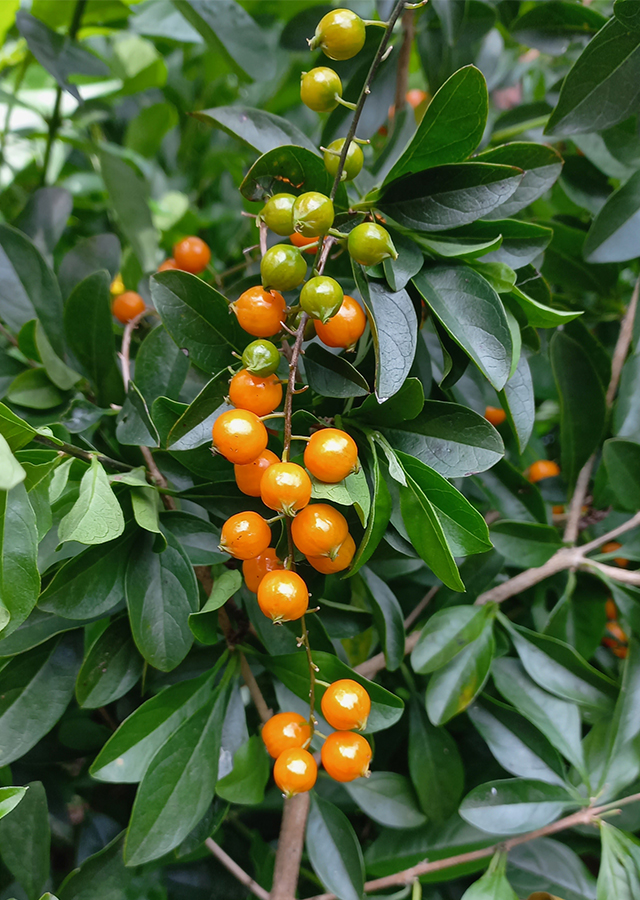Traditional Herbs from Duranta erecta
smooth_blood_circulation
- Take 30 g of fresh leaves and wash them until clean.
- Boil them in 400 ml of water for 10 minutes.
- Strain the water.\u00a0
- Drink 2 times a day\u00a0morning and evening"] ,"malaria
- Prepare 20 g of fresh sinyo naughty fruit then wash until clean.
- Boil in 200 ml of water for 15 minutes.
- Strain, drink the water all at once.
- Do it 2-3 times a day.
What is Duranta erecta Looks like??



Parts of Duranta erecta that could be used
Duranta erecta Distribution
Naughty sinyo is native to Mexico, the Caribbean, Central America and most of South America, the plant is also reported to be native to the US states of Arizona, California, Florida, Louisiana and Texas. People often plant this plant as an ornamental plant and hedge plant. The naughty sinyo plant is also widely used in traditional medicine in several countries, such as China and India. In China, where the fruit is reported to be poisonous to humans, it turns out that in Chinese medicine it is believed and used to treat malaria, and the leaves are used to treat abscesses. Meanwhile, in Andhra Pradesh, India, a decoction of the whole plant is used to treat asthma, bronchitis and fever. Apart from that, this plant can also be used as an insect repellent.
Agroecology of Duranta erecta
Naughty Sinyo can generally be found in disturbed areas (dry to damp), along roadsides, and in bushes, at an altitude of 150-1,650 m above sea level. Grows best in full sun, but is tolerant of partial shade with annual rainfall usually between 800-1800 mm/yr. Prefers moist, fertile, well-drained and well-drained soil. Sinyo naughty is tolerant of acidic to slightly alkaline soil and is quite tolerant of salt.
Morphology of Duranta erecta
- Taproot, dirty yellow.
- Stems are round, have many branches, when young the stems have short, smooth hairs (pubescent). The bark is light brown and slightly wrinkled. The stems of mature plants usually have sharp axillary spines." ,"Single leaves, simple, ovate to lanceolate, thin, pointed at the base, pointed or rounded at the tip, with serrated to flat leaf edges, in pairs, opposite leaf locations, pinnate leaf spines, smooth surface, green or green in color yellowish.
- Compound flowers, tubular with 5 lobes, light purple and white. Flowers hang on long racemes and pubescent on both surfaces. The corolla is approximately 7 mm long, scentless.
- Fleshy fruit, green when young and becoming orange-yellow or golden when ripe, ovoid, arranged in large hanging clusters.
- Seeds are round, hard, greenish white.
Cultivation of Duranta erecta
Propagation is carried out generatively (seeds) and vegetatively (stem cuttings).
Duranta erecta, more details :
Chemical Content of Duranta erecta
Glucosides, saponins, durantosides I, II, III, IV, and V, oleanolic acid, ursolic acid, (E)-cinnamic acid, beta-sitosteryl-3-O-beta-D-glucopyranoside, (E)-p-acid methoxycinnamate, kusaginin, alkaloids, flavonoids, steroids, triterpenoids, tannins, phenols, anthocyanins, oxalates, routine, epicatechin, lunamarine, saponin, sapogenin, ribalinidine, phytate, kaempferol, catechin, duranterectoside A, B, C, and D, lamiide, lamiidoside, verbascoside.
Benefits of Duranta erecta
Treats itchy skin, fever, boils, malaria, infertility, pneumonia, asthma, bronchitis, cataracts, improves blood circulation. Has activity as a diuretic, anthelmintic, antioxidant and antibacterial.
Simplisia of Duranta erecta
Another Facts for Duranta erecta :
Synonym of Duranta erecta
Duranta angustifolia Salibs., Duranta dentata Pers., Duranta inermis L.
Habitus of Duranta erecta
Bush. Annual shrub, up to 1-2 m high
Habitat of Duranta erecta
- Riverside", "Forest", "Coast", "Roadside", "Shrub Area", "Grassland", "Land



No comments:
Post a Comment